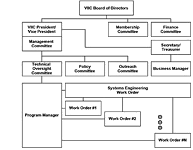Why You Should Choose a Totally Integrated Legal Accounting Software Solution
Increasing Efficiency

Most law firms are constantly attempting to become more efficient and
increase their bottom line.
One common focus of optimization is in the law firms computer software systems. One of the greatest
efficiency factors lies in the ability to seamlessly pass data as needed between the various
modules within an application. Yet, trying to save a few dollars, many firms purchase a
stand-alone time and billing systems coupled with a second stand alone accounting system.
Is this really a good choice and
does it save on costs?
Where is the Financial Information?

Financial information permeates law practice management applications. In addition to managing
attorney, client, and matter information, posting time, producing invoices, and maintaining
accurate general ledger balances; law firms are required to write checks, record and recover
client costs, process client receipts, and maintain accurate client trust records.
When using piecemeal systems, it’s very hard to limit functionality to within "time and billing" or
"accounting". There is no clear cut border since common information must be processed by both packages.
For example: A client cost check is written in the accounting system which maintains accurate
General Ledger balances, thereafter the client costs must be manually re-keyed into the client’s
work in process account allowing for eventual invoicing and recovery. The manual redistribution
is inherently riddled with problems. If not performed in a timely manner, the redistribution of
costs may be missed and forgotten. Postings may be transposed resulting in incorrect amounts,
matters, or possibly duplicate entries.
Double Posting

Stand alone time and billing systems adequately produce and store client invoices,
but fall short when processing client receipts. Receipts generally must be entered twice
when using piecemeal systems; once into the time and billing system to accurately maintain
the firm’s accounts receivable balance, then a second time into the accounting package to
accurately record the general ledger cash and revenue balances. When re-keyed into the
accounting system, each receipt must be manually analyzed to correctly allocate it against
fees earned and costs recovered. The double posting requirement again
results in potential
omission, transposition, or duplication errors often rendering balances unreliable.
Trust Funds

Piecemeal processing is further complicated when client trust funds should be applied against invoices.
The trust balance, often stored in the standalone accounting system, is not automatically associated
with an invoice generated from a standalone time and billing system. Therefore the invoice balance
is not decreased by the available trust funds and the trust activity is not noted on the invoice for
client review and verification. A trust disbursement must be manually entered and processed from
the accounting system, then again manually entered and processed as a client receipt into the time
and billing system to relieve the invoice. Again, if not performed in a timely manner,
posting omissions, transpositions, or duplications may occur requiring hours of
manual reconciliation time.
The Problem

Taken alone, each duplicate transaction may seem insignificant. Yet when replicated multiple times per day,
often by different people, piecemeal time, billing, and accounting systems rarely provide timely or
accurate information. Often many hours, if not days are required to reconcile postings between the systems.
Total Integration is the Key

Integrated time, billing, and accounting systems
completely eliminate this duplication of effort
resulting in timely, accurate information. Disbursement checks post as needed to the general ledger
and client work in process accounts. Receipt transactions both relieve receivables and post general
ledger activity. Client trust activity is reflected on client invoices and trust funds are automatically
distributed from the trust account to the general fund to relieve the invoice. Productivity reporting
naturally reflects the entire firm’s performance by including time worked billing, and accounting activity.

Here at DTBusiness.com we firmly believe that our LAWS/Pro product is the answer to increased efficiency.
With all of its features fully integrated from the calendaring process, through billing and accounting,
the time savings of eliminating double entry alone can be substantial. It also provides for much tighter
controls on all financial transactions which can reduce the possibilities of fraud or embezzlement.
LAWS/Pro provides comprehensive tools and management reporting which could not be easily generated if information is
kept in disparate systems. When evaluating
legal accounting software solutions, this should be a key feature.
LAWS/Pro is not only easy to use but it brings all of your accounting together under one roof, where it belongs.
That is what makes LAWS/Pro the best legal accounting software solution available
on the market today for small to mid size law firms.